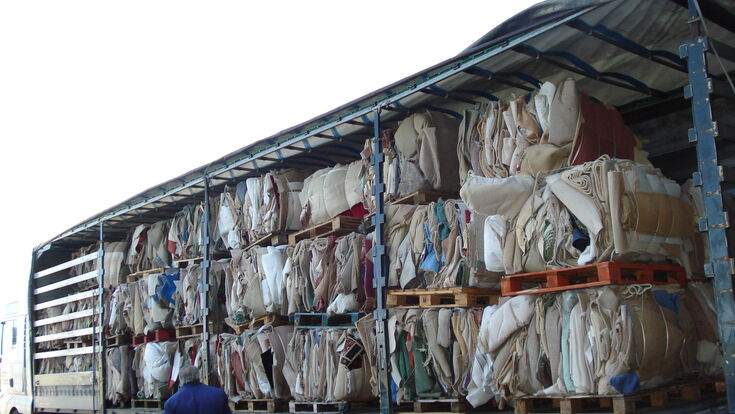Carpet Recycling : "A key challenge is finding more suitable outlets capable of recycling carpet waste"

Carpet waste is a problem. It contains toxic chemicals and is manufactured of multiple layers. It poses environmental and public health concerns and causes greenhouse gas emissions. And the majority still end up in landfills or incineration. That needs to change.
Some legislators already took steps to improve carpet recycling rates. The US state of California implemented a carpet producer responsibility bill. And as of 2026, the state of New York requires carpet manufacturers to establish a program for collecting and recycling discarded and unused carpeting. In the UK so far, there is no EPR scheme for carpets. But the non-profit association Carpet Recycling UK (CRUK) whose members include some major carpet producers as well as reuse and recycling specialists, aims to help the sector to develop sustainably.
Adnan Zeb-Khan, CRUK Scheme Manager, talks with Waste Management World about the current state of carpet recycling, the challenges it poses for recyclers, and the sector's future.
How much of the carpet waste can be reused? How much actually gets reused?
In 2020 we recorded circa 467,000 tonnes of carpet waste disposed of in the UK alone, of which we estimate that 70% is diverted from landfill through various reuse, recycling, and energy from waste recovery activities. The reuse element - where the carpet is reused in a flooring setting - is still small in comparison to recycling and energy from waste recovery. Carpet Recycling UK works through its nationwide network to harness reusable carpet tiles and surplus carpets to provide affordable flooring to those who need it. Our reuse members include Envirocycle London, , Greenstream Flooring, Further Flooring, Midland Carpet Tile Recycling, Reuse Network, Salvation Army Trading Company and Spruce Carpets, which are focused on finding excess or reused carpets for domestic or commercial properties. In addition to this, we work with refurbishment and fit-out companies on identifying projects where carpet tiles can be reused or repurposed.
Post-manufacture trims and fitting offcuts are segregated and recycled to manufacture non-woven felt underlay ranges and growing felts.
The plastics sector is using single polymer carpet ranges such as polypropylene event carpets.
Carpet tiles are being collected for recycling, to recover.
Interested in industry updates? Subscribe to our newsletters!

How much of it can be recycled and how much gets recycled?
There are no official statistics for carpet waste being recorded in the UK and waste management companies who accept such materials are not obliged to report on carpet waste as a specific material stream. From our 2020 carpet and textile flooring waste survey we estimated that 41,000 tonnes of carpet waste are being recycled. This figure is likely to be higher as landfill diversion tonnages are not provided by the whole sector. Carpet Recycling UK is surveying the sector currently, but the figures are only as good as the information provided. We are requesting more information on the volume placed on the market and more detail on end-of-life tonnages.
What are the challenges in carpet and textile flooring recycling?
One of the key challenges is finding more suitable outlets capable of recycling this sort of waste. Carpets and textile flooring products are manufactured with multiple layers, and are durable and long-lasting products therefore, not easily taken apart for recycling at the end of life. Currently, no nationwide take-back scheme exists that will cover all the different fibre types and products placed on the market. This would help bring these back to either a central point or multiple destinations where they can be recycled. Carpet and textile flooring waste are also viewed as a difficult-to-recycle material by the waste management sector and therefore, not openly accepted, only as part of general waste.
Carpet and textile flooring waste are also viewed as a difficult-to-recycle material by the waste management sector and therefore, not openly accepted, only as part of general waste.Adnan Zeb Khan
Are there enough recycling facilities in the UK to recycle all carpet waste?
Currently no. However, it is our understanding that things are developing as more opportunities are being realised with regard to the extraction of polypropylene, PET, and nylon fibres from this waste stream. In the UK, the supply chain is developing market-based solutions in a voluntary way in order to use waste textile flooring materials as a resource.
What are the current legal requirements regarding carpet waste? Are they going to change?
Carpet and textile flooring waste generally fall under the same category of bulky household waste and therefore are governed under the same legislation, such as the EPA act. We anticipate that a scheme such as Extended Producer Responsibility (EPR) will be introduced to cover carpet and textile flooring waste.

